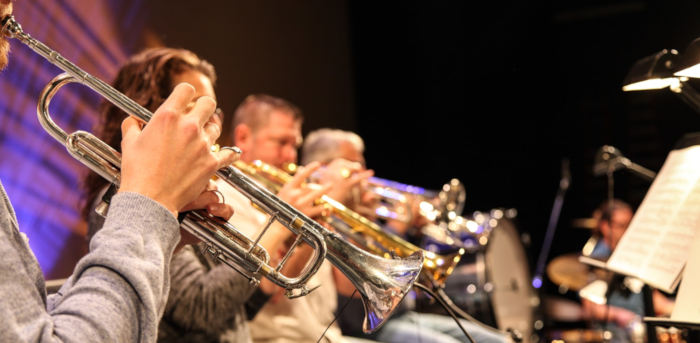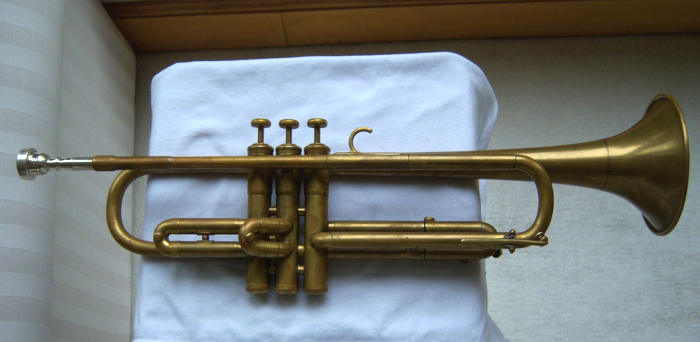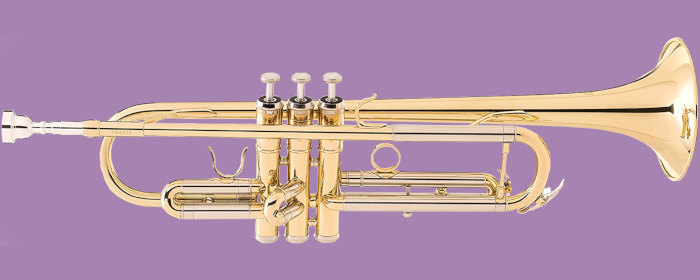
Which trumpet finish is best?
Do you go for silver plating? Gold plating? Lacquer? Or are you an old-school lover of raw brass trumpets?
Well, if you don’t know where to begin, or even if you feel strongly about one or the other, this article about the differences among them might be worth your time.
Starting from the beginning, we’ll cover the various innovations in trumpet coating technology and the pros and cons of each. And later we’ll look at the hot-button issue of sound and quality differences between trumpet finishes.
Raw brass trumpets
In the early days of the instrument, most trumpets were made from raw, or unfinished, brass. While many trumpets today are finished with either a metal plating or a lacquer coating, some musicians remain enthusiastic about continuing with raw brass.
As it oxidizes, brass produces a thin layer of green-blue discoloration called patina. While some trumpet players like patina so much that they trade tips for accelerating the process, many others consider it a drawback of raw brass. The patina can leave residue on the player’s hands and also has a distinct smell that many find unpleasant.

But the main problem with raw brass for instruments is that it tarnishes faster than other materials. This combined with an aesthetic appreciation for shinier alternatives drove early manufacturers to begin coating their trumpets with a protective a metal plating.
Silver plated trumpets
Manufacturers of the earliest plated trumpets generally used silver or gold. Silver plating gives the instrument a shiny look, as opposed to the duller matte finish typical of raw brass.
But more importantly, silver-plated trumpets will tarnish more slowly over time than raw brass models and thus require less maintenance.
Silver plating does add to the material cost of production, however. So all other things being equal, a silver-plated trumpet will normally cost a bit more than a raw brass model.
Gold plated trumpets
Gold-plated trumpets offer much of the same benefit as silver-plated trumpets. They shine, which many musicians value. And they last longer than raw brass trumpets without needing as much routine polishing to fight tarnishing.
But gold plating is even more resilient than silver plating. A silver-plated trumpet will generally require a bit more maintenance. The disadvantage with gold plating is that the use of gold, being a more expensive metal than silver, will usually raise the price of the instrument.
Lacquered trumpets
The added expense of metal plating and the need to build trumpets more competitively drove many manufacturers to use lacquer finishes instead of plating.

Lacquer has many of the same strengths of plating but is much less expensive. A tinted lacquer finish can give instruments a similar gold or silver shine. And because it’s synthetic, rather than metal, it won’t tarnish like plating and still protects the trumpet’s underlying brass material.
The trouble with lacquer comes when—not if—it needs repairs. Lacquer finish does wear or chip off eventually. And when it does you’ll start to notice some dips and other inconsistencies in the coating.
But the real concern is that repairing a lacquered trumpet is harder than repairing a plated one:

Most repairs other than very minor repairs require the application of heat. Heat to re-solder disconnected pieces, heat to loosen stuck parts, heat to allow serious dents to be removed without cracking the metal. Unfortunately, heat and lacquer are not good friends. Heat will darken and eventually burn the lacquer off. The repairman’s only alternatives are to use a minimum amount of heat and try to avoid damaging the lacquer, or remove the lacquer and try to touch it up afterwards.
Another point to consider with lacquered trumpets is their vulnerability to acidity. Natural acidity in saliva and on the skin’s surface can corrode a lacquer finish. If your hands are relatively acidic, be sure to wash them before playing or wear gloves.
Satin finish
A later categorical development in trumpet coating material is what’s called satin finish. This is applied by bead blasting or scratch brushing the raw brass before applying either a plating or lacquer finish and leaves the trumpet with a semi-matte surface.
Some musicians dig the look. But a satin finish also has some weaknesses. Horns with satin finish often show wear with pretty minimal handling. Contact with a ring on a finger is often enough to inflict damage. And some players complain that shiny spots begin to form on the parts of the trumpet where they grip it.
I wouldn’t say there is a clear consensus on the durability of satin finish, though. There are musicians who attest that a lacquer finish applied to a scratched brass instrument won’t wear any more than does a regular lacquered trumpet.
Sound differences between lacquered and plated trumpets
Now we arrive at one of the most controversial topics among trumpet players: what differences in sound, if any, do various trumpet coatings present?
Let’s first look at an early study often referenced in supporting a difference and then consider some more recent interpretations.
The Schilke experiment
Renold Schilke (1910-1982), the founder of Schilke Music Products and a professional orchestral trumpet player, attempted to settle the finish question with an experiment he performed sometime between the 1920s and 1960s.
Schilke later wrote an account of his findings, where he noted he started with three trumpet models that played identically and altered them as follows:
- He left one trumpet in raw brass
- He applied a silver plating to a second trumpet
- He applied a lacquer finish to a third trumpet
When he asked various professional trumpet players to try the altered trumpets all reported that there were no differences in playing qualities between the raw brass trumpet and the plated trumpet. But the lacquered trumpet now played with a different pitch and worse tonal quality.
Schilke attributed the difference in sound from the lacquered trumpet to the coating thickness. The 0.007” lacquer application practically doubled the material thickness of the original 0.014” bell. While the plating, only 0.0005” thick, added no considerable thickness.
Modern interpretations of sound differences
While the process for lacquering a brass instrument has changed since Schilke published his findings many decades ago, many musicians still attest to those same differences in sound and others.
Among those suggested differences are that lacquer will deaden the sound, slow down the response and improve the efficiency of the instrument.

When you lacquer a trumpet, depending on the lacquer and how thick it is, it’ll improve the efficiency of the instrument and, in most cases, most people will hear it to be a little darker. So if you have a lacquered instrument today and you strip the lacquer off, it will most definitely play less efficient and brighter.
Jason Harrelson, Harrelson Trumpets
As for any plating effects, there are some trumpet players that argue plating will affect sound, such as a brighter sound with gold than with silver plating. But there seems to be wider agreement that raw brass and all platings sound just about the same.
Conclusion
Now that you have a clearer understanding of the key differences between the types of trumpet finishes, I hope you have an easier time finding the right horn for you.
I tend to think the differences in maintenance, cost and aesthetics between trumpet finish options far outweigh any subtle difference in sound they contribute.
Keep in mind that there are many factors that will affect how an instrument plays and that no two musicians will experience the same trumpet in the same way.
What insights do you have with experimenting with raw-brass, lacquered and plated trumpets? Tell us about them in the comments below!
I never had a Lacquered horn next one I’m gonna try it
Hi, an amateur horn player here, I am impressed with trumpet players lip flexibility but the French horn takes the price of the length and unsecured notes playing most of the time in high register so, the double horn is standard… here is my observation on lacquer on the horn:
Non lacquer,
1. The tone is more fluid right of bet
2. It takes less focus to get every note in pitch
3. Horn gets more “cylindrical tone”- sound character
4. The high pitched are not secured well
Lacquer,
1. Requires longer warm up
2. It takes total focus to get every note in pitch
3. Horn gets that a “conical tone”- sound character in all register
4. Horn gets good control in braking in “brassy”
5. The high notes are well secured
6. The harmonics are all secured once the horn is warmed up
My choice is lacquered even thought it takes obligation to warm up.
The 0.007” lacquer application practically doubled the material thickness of the original 0.014” bell.
A small math or typo?
.007 is half again as much (or 50% more) than .014,
Hi Andrew – thanks for your comment! So here we mean that the 0.007″ lacquer application is doubling the thickness of the original bell (0.014″) because the lacquer is applied to the inside and outside of the bell.
My best favorite trumpet is a raw brass Mendez. Best sound by far of all my others.